-
Report Prologue
-
Market Definition
-
2.1
-
Definition 12
-
Scope of the Study 12
-
Research Objectives
-
12
-
Assumptions 13
-
Limitations 13
-
Markets
-
Structure 13
-
Research Methodology
-
Research Process 14
-
Primary Research 15
-
Secondary Research 15
-
3.4
-
Market Size Estimation 16
-
Forecast Model 17
-
Market Dynamics
-
Drivers 18
- Increasing crude oil production is a major
- Flourishing automotive industry has surged demand
- On account of stringent emission
- Increasing
-
market driver 18
-
for hydraulic fluid over the past few years and it is anticipated to upkeep the
-
demand during forthcoming years. 19
-
guidelines and regulaterly framework, Bio-based hydraulic fluids has emerged as
-
new market driver with significant demand in global market 19
-
industrial production as well as rising industrialization has led demand for hydraulic
-
fluid 19
-
Restraints 20
- Unstable crude oil prices
- Strict environmental regulations
-
acts as a major restraing factor 20
-
expected to pose as a growth barrier 20
-
Opportunities 21
- Thriving automotive industry is expecetd to uncover healthy growth opportunitities
-
for hydraulic fluids during forthcoming years 21
-
Market Trends 21
- Adoption of bio-based hydraulic fluid on accopunt of environment safety
-
21
-
Market Factor Analysis
-
Supply Chain Analysis 22
- Raw Material (Crude Purchase) 22
- Hydraulic Fluids
- Distributors 23
-
Producers (Refining/Processing) 22
-
5.1.4
-
End-User(Market Players) 23
-
Porter''s 5 Forces Analysis 24
- Competative Rivalry (High) 24
- Threat of New Entrants (Relatively
- Threat of Substitute (LOW) 25
- Bargaining
- Bargaining Power of Buyers (HIGH) 26
-
Medium) 25
-
Power of Supplier (LOW) 25
-
Global Hydraulic Fluid Market, by Type
-
Introduction 27
-
Petroleum Based Hydraulic fluid 29
-
Bio-Based Hydralic
-
fluid 30
-
Fire-resistant Type 32
-
Global Hydraulic Fluid
-
Market, by End-Use Industry
-
Introduction 34
-
Oil &
-
Gas 37
-
Automotive 38
-
Marine 39
-
Aerospace
-
& Defense 40
-
Construction 42
-
Others (Minnig, Forestry,
-
and Agriculture) 43
-
Global Hydraulic Fluid Market, by Region
-
Introduction 44
-
North America 45
-
Europe 53
-
Asia Pacific 73
-
Latin America 84
-
Middle
-
East & Africa 93
-
Competitive Landscape
-
Competitive
-
Landscape 107
-
Introduction 107
-
Agreement 108
-
Expansion 110
-
Product Launch 112
-
Acquisition
-
113
-
Product Development and Joint Venture 114
-
Company
-
Profile
-
Royal Dutch Shell plc. 116
- Company Overview
- Product/Business Segment Overview 116
- Financial
- Key Developments 117
-
116
-
Overview 117
-
Exxon Mobil
- Company Overview 119
- Product/Business
- Financial Updates 120
- Key
-
Corporation 119
-
Segment Overview 119
-
Developments 121
-
Dow 122
- Company Overview 122
- Product/Business Segment Overview 122
- Financial
-
Updates 123
-
BASF SE 124
- Company Overview 124
- Product/Business Segment Overview 124
- Financial
- Key Developments 125
-
Updates 125
-
Condat 126
- Company Overview 126
- Product/Business Segment Overview
- Financial Updates 126
- Key Developments 126
-
126
-
Eastman Chemical Company 127
- Company Overview 127
- Product/Business Segment Overview 127
- Financial
- Key Developments 127
-
Updates 127
-
Schaeffer Manufacturing
- Company Overview 128
- Product/Business
- Financial Updates 128
- Key
-
Co 128
-
Segment Overview 128
-
Developments 128
-
LUKOIL Marine Lubricants DMCC 129
- Product/Business Segment Overview 129
- Financial Updates 129
- Key Developments 129
-
10.8.1
-
Company Overview 129
-
Chevron Corporation. 130
- Company Overview 130
- Product/Business Segment Overview 130
- Financial Updates
- Key Developments 130
-
130
-
Indian Oil Corporation
- Company Overview 131
- Product/Business
- Financial Updates 131
-
Ltd 131
-
Segment Overview 131
-
10.10.4
-
Key Developments 131
-
Conclusion
-
List
-
of Tables
-
GLOBAL HYDRAULIC FLUID MARKET BY TYPE, 2023-2030 (USD
-
MILLION) 28
-
GLOBAL HYDRAULIC FLUID MARKET BY TYPE, 2023-2030
-
(THOUSAND TONS) 29
-
GLOBAL PETROLEUM BASED MARKET FOR HYDRAULIC
-
FLUID, BY REGION 2023-2030 (USD MILLION) 29
-
GLOBAL PETROLEUM
-
BASED MARKET FOR HYDRAULIC FLUID, BY REGION 2023-2030 (THOUSAND TON) 30
-
GLOBAL BIO-BASED MARKET FOR HYDRAULIC FLUID, BY REGION 2023-2030 (USD
-
MILLION) 30
-
GLOBAL BIO-BASED MARKET FOR HYDRAULIC FLUID, BY REGION
-
GLOBAL FIRE-RESISTANT TYPE MARKET
-
FOR HYDRAULIC FLUID, BY REGION 2023-2030 (USD MILLION) 32
-
GLOBAL
-
FIRE-RESISTANT TYPE MARKET FOR HYDRAULIC FLUID, BY REGION 2023-2030 (THOUSAND TONS)
-
33
-
GLOBAL HYDRAULIC FLUID MARKET BY END-USER INDUSTRIES, 2023-2030
-
(USD MILLION) 35
-
GLOBAL HYDRAULIC FLUID MARKET BY END-USER INDUSTRIES,
-
GLOBAL OIL & GAS MARKET FOR
-
HYDRAULIC FLUID, 2023-2030 (USD MILLION) 37
-
GLOBAL OIL &
-
GAS MARKET FOR HYDRAULIC FLUID, 2023-2030 (THOUSAND TONS) 37
-
TABLE 13
-
GLOBAL AUTOMOBILE MARKET FOR HYDRAULIC FLUID, 2023-2030 (USD MILLION) 38
-
GLOBAL OIL & GAS MARKET FOR HYDRAULIC FLUID, 2023-2030 (THOUSAND
-
TONS) 38
-
GLOBAL MARINE MARKET FOR HYDRAULIC FLUID, 2023-2030
-
(USD MILLION) 39
-
GLOBAL MARINE MARKET FOR HYDRAULIC FLUID, 2023-2030
-
(THOUSAND TONS) 39
-
GLOBAL AIRCRAFT MARKET FOR HYDRAULIC FLUID,
-
GLOBAL AIRCRAFT MARKET FOR HYDRAULIC
-
FLUID, 2023-2030 (THOUSAND TONS) 40
-
GLOBAL INDUSTRIAL MACHINERY
-
MARKET FOR HYDRAULIC FLUID, 2023-2030 (USD MILLION) 41
-
GLOBAL
-
INDUSTRIAL MACHINERY MARKET FOR HYDRAULIC FLUID, 2023-2030 (THOUSAND TONS) 41
-
GLOBAL CONSTRUCTION MARKET FOR HYDRAULIC FLUID, 2023-2030 (USD
-
MILLION) 42
-
GLOBAL CONSTRUCTION MARKET FOR HYDRAULIC FLUID,
-
GLOBAL OTHERS MARKET FOR HYDRAULIC
-
FLUID, 2023-2030 (USD MILLION) 43
-
GLOBAL OTHERS MARKET FOR HYDRAULIC
-
FLUID, 2023-2030 (THOUSAND TONS) 43
-
GLOBAL HYDRAULICFLUID MARKET,
-
BY REGION 2023-2030 (USD MILLION) 44
-
GLOBAL HYDRAULICFLUID MARKET,
-
BY REGION 2023-2030 (THIUSAND TONS) 45
-
NORTH AMERICA HYDRAULIC
-
FLUID MARKET, BY COUNTRY 2023-2030 (USD MILLION) 45
-
NORTH AMERICA
-
HYDRAULIC FLUID MARKET, BY COUNTRY 2023-2030 (THOUSAND TON) 46
-
TABLE
-
NORTH AMERICA HYDRAULIC FLUID MARKET, BY TYPE 2023-2030 (USD MILLION) 46
-
NORTH AMERICA HYDRAULIC FLUID MARKET, BY TYPE 2023-2030 (THOUSAND TON)
-
47
-
NORTH AMERICA HYDRAULIC FLUID MARKET, BY END-USE INDUSTRY
-
NORTH AMERICA HYDRAULIC FLUID MARKET,
-
BY END-USE INDUSTRY 2023-2030 (THOUSAND TON) 48
-
US HYDRAULIC
-
FLUID MARKET, BY TYPE 2023-2030 (USD MILLION) 48
-
US HYDRAULIC
-
FLUID MARKET, BY TYPE 2023-2030 (THOUSAND TON) 49
-
US HYDRAULIC
-
FLUID MARKET, BY END-USE INDUSTRY 2023-2030 (USD MILLION) 49
-
TABLE 36
-
US HYDRAULIC FLUID MARKET, BY END-USE INDUSTRY 2023-2030 (THOUSAND TON) 50
-
CANADA HYDRAULIC FLUID MARKET, BY TYPE 2023-2030 (USD MILLION) 50
-
CANADA HYDRAULIC FLUID MARKET, BY TYPE 2023-2030 (THOUSAND TON)
-
51
-
CANADA HYDRAULIC FLUID MARKET, BY END-USE INDUSTRY 2023-2030
-
(USD MILLION) 51
-
CANADA HYDRAULIC FLUID MARKET, BY END-USE INDUSTRY
-
EUROPEAN HYDRAULIC FLUID MARKET,
-
BY COUNTRY 2023-2030 (USD MILLION) 53
-
EUROPEAN HYDRAULIC FLUID
-
MARKET, BY COUNTRY 2023-2030 (THOUSAND TON) 54
-
EUROPEAN HYDRAULIC
-
FLUID MARKET, BY TYPE 2023-2030 (USD MILLION) 55
-
EUROPEAN HYDRAULIC
-
FLUID MARKET, BY TYPE 2023-2030 (THOUSAND TON) 55
-
EUROPEAN HYDRAULIC
-
FLUID MARKET, BY END-USE INDUSTRY 2023-2030 (USD MILLION) 56
-
TABLE 46
-
EUROPEAN HYDRAULIC FLUID MARKET, BY END-USE INDUSTRY 2023-2030 (THOUSAND TON) 57
-
GERMANY HYDRAULIC FLUID MARKET, BY TYPE 2023-2030 (USD MILLION)
-
57
-
GERMANY HYDRAULIC FLUID MARKET, BY TYPE 2023-2030 (THOUSAND
-
TON) 58
-
GERMANY HYDRAULIC FLUID MARKET, BY END-USE INDUSTRY
-
GERMANY HYDRAULIC FLUID MARKET, BY
-
END-USE INDUSTRY 2023-2030 (THOUSAND TON) 59
-
UK HYDRAULIC FLUID
-
MARKET, BY TYPE 2023-2030 (USD MILLION) 59
-
UK HYDRAULIC FLUID
-
MARKET, BY TYPE 2023-2030 (THOUSAND TON) 60
-
UK HYDRAULIC FLUID
-
MARKET, BY END-USE INDUSTRY 2023-2030 (USD MILLION) 60
-
UK HYDRAULIC
-
FLUID MARKET, BY END-USE INDUSTRY 2023-2030 (THOUSAND TON) 61
-
TABLE 55
-
RUSSIA HYDRAULIC FLUID MARKET, BY TYPE 2023-2030 (USD MILLION) 61
-
TABLE
-
RUSSIA HYDRAULIC FLUID MARKET, BY TYPE 2023-2030 (THOUSAND TON) 62
-
TABLE
-
RUSSIA HYDRAULIC FLUID MARKET, BY END-USE INDUSTRY 2023-2030 (USD MILLION) 62
-
RUSSIA HYDRAULIC FLUID MARKET, BY END-USE INDUSTRY 2023-2030 (THOUSAND
-
TON) 63
-
FRANCE HYDRAULIC FLUID MARKET, BY TYPE 2023-2030 (USD
-
MILLION) 63
-
FRANCE HYDRAULIC FLUID MARKET, BY TYPE 2023-2030
-
(THOUSAND TON) 64
-
FRANCE HYDRAULIC FLUID MARKET, BY END-USE
-
INDUSTRY 2023-2030 (USD MILLION) 64
-
FRANCE HYDRAULIC FLUID MARKET,
-
BY END-USE INDUSTRY 2023-2030 (THOUSAND TON) 65
-
SPAIN HYDRAULIC
-
FLUID MARKET, BY TYPE 2023-2030 (USD MILLION) 65
-
SPAIN HYDRAULIC
-
FLUID MARKET, BY TYPE 2023-2030 (THOUSAND TON) 66
-
SPAIN HYDRAULIC
-
FLUID MARKET, BY END-USE INDUSTRY 2023-2030 (USD MILLION) 66
-
TABLE 66
-
SPAIN HYDRAULIC FLUID MARKET, BY END-USE INDUSTRY 2023-2030 (THOUSAND TON) 67
-
ITALY HYDRAULIC FLUID MARKET, BY TYPE 2023-2030 (USD MILLION) 67
-
ITALY HYDRAULIC FLUID MARKET, BY TYPE 2023-2030 (THOUSAND TON)
-
68
-
ITALY HYDRAULIC FLUID MARKET, BY END-USE INDUSTRY 2023-2030
-
(USD MILLION) 68
-
ITALY HYDRAULIC FLUID MARKET, BY END-USE INDUSTRY
-
POLAND HYDRAULIC FLUID MARKET, BY
-
TYPE 2023-2030 (USD MILLION) 69
-
POLAND HYDRAULIC FLUID MARKET,
-
BY TYPE 2023-2030 (THOUSAND TON) 70
-
POLAND HYDRAULIC FLUID MARKET,
-
BY END-USE INDUSTRY 2023-2030 (USD MILLION) 70
-
POLAND HYDRAULIC
-
FLUID MARKET, BY END-USE INDUSTRY 2023-2030 (THOUSAND TON) 71
-
TABLE 75
-
REST OF THE EUROPE HYDRAULIC FLUID MARKET, BY TYPE 2023-2030 (USD MILLION) 71
-
REST OF THE EUROPE HYDRAULIC FLUID MARKET, BY TYPE 2023-2030 (THOUSAND
-
TON) 72
-
REST OF THE EUROPE HYDRAULIC FLUID MARKET, BY END-USE
-
INDUSTRY 2023-2030 (USD MILLION) 72
-
REST OF THE EUROPE HYDRAULIC
-
FLUID MARKET, BY END-USE INDUSTRY 2023-2030 (THOUSAND TON) 73
-
TABLE 79
-
ASIA PACIFIC HYDRAULIC FLUID MARKET, BY COUNTRY 2023-2030 (USD MILLION) 73
-
ASIA PACIFIC HYDRAULIC FLUID MARKET, BY COUNTRY 2023-2030 (THIUSAND TON)
-
74
-
ASIA PACIFIC HYDRAULIC FLUID MARKET, BY TYPE 2023-2030 (USD
-
MILLION) 74
-
ASIA PACIFIC HYDRAULIC FLUID MARKET, BY TYPE 2023-2030
-
(THOUSAND TON) 75
-
ASIA PACIFIC HYDRAULIC FLUID MARKET, BY END-USE
-
INDUSTRY 2023-2030 (USD MILLION) 75
-
ASIA PACIFIC HYDRAULIC FLUID
-
MARKET, BY END-USE INDUSTRY 2023-2030 (THOUSAND TON) 76
-
CHINA
-
HYDRAULIC FLUID MARKET BY TYPE 2023-2030 (USD MILLION) 76
-
CHINA
-
HYDRAULIC FLUID MARKET BY TYPE 2023-2030 (THOUSAND TON) 77
-
CHINA
-
HYDRAULIC FLUID MARKET BY END-USE INDUSTRY 2023-2030 (USD MILLION) 77
-
TABLE
-
CHINA HYDRAULIC FLUID MARKET BY END-USE INDUSTRY 2023-2030 (THOUSAND TONS) 78
-
JAPAN HYDRAULIC FLUID MARKET BY TYPE 2023-2030 (USD MILLION) 78
-
JAPAN HYDRAULIC FLUID MARKET BY TYPE 2023-2030 (THOUSAND TONS)
-
79
-
JAPAN HYDRAULIC FLUID MARKET BY END-USE INDUSTRY 2023-2030
-
(USD MILLION) 79
-
JAPAN HYDRAULIC FLUID MARKET BY END-USE INDUSTRY
-
INDIA HYDRAULIC FLUID MARKET BY
-
TYPE 2023-2030 (USD MILLION) 80
-
INDIA HYDRAULIC FLUID MARKET
-
BY TYPE 2023-2030 (THOUSAND TONS) 81
-
INDIA HYDRAULIC FLUID MARKET
-
BY END-USE INDUSTRY 2023-2030 (USD MILLION) 81
-
INDIA HYDRAULIC
-
FLUID MARKET BY END-USE INDUSTRY 2023-2030 (THOUSAND TONS) 82
-
TABLE 97
-
REST OF THE ASIA HYDRAULIC FLUID MARKET BY TYPE 2023-2030 (USD MILLION) 82
-
REST OF THE ASIA FLUID MARKET BY TYPE 2023-2030 (THOUSAND TONS) 83
-
REST OF THE ASIA FLUID MARKET BY END-USE INDUSTRY 2023-2030 (USD
-
MILLION) 83
-
REST OF THE ASIA FLUID MARKET BY END-USE INDUSTRY
-
LATIN AMERICA HYDRAULIC FLUID
-
MARKET, BY COUNTRY 2023-2030 (USD MILLION) 84
-
LATIN AMERICA
-
HYDRAULIC FLUID MARKET, BY COUNTRY 2023-2030 (THOUSAND TON) 85
-
TABLE
-
LATIN AMERICA HYDRAULIC FLUID MARKET, BY TYPE 2023-2030 (USD MILLION) 85
-
LATIN AMERICA HYDRAULIC FLUID MARKET, BY TYPE 2023-2030 (THOUSAND
-
TON) 86
-
LATIN AMERICA HYDRAULIC FLUID MARKET, BY END-USE R
-
LATIN AMERICA HYDRAULIC FLUID MARKET,
-
BY END-USE R 2023-2030 (THOUSAND TON) 87
-
BRAZIL HYDRAULIC FLUID
-
MARKET BY TYPE 2023-2030 (USD MILLION) 87
-
BRAZIL HYDRAULIC
-
FLUID MARKET BY TYPE 2023-2030 (THOUSAND TON) 88
-
ARGENTINA
-
HYDRAULIC FLUID MARKET BY TYPE 2023-2030 (USD MILLION) 88
-
ARGENTINA
-
HYDRAULIC FLUID MARKET BY TYPE 2023-2030 (THOUSAND TON) 89
-
TABLE 111
-
ARGENTINA HYDRAULIC FLUID MARKET BY END-USE R 2023-2030 (USD MILLION) 89
-
ARGENTINA HYDRAULIC FLUID MARKET BY END-USE R 2023-2030 (THOUSAND TON)
-
90
-
REST OF THE LATIN AMERICA HYDRAULIC FLUID MARKET BY TYPE
-
REST OF THE LATIN AMERICA HYDRAULIC
-
FLUID MARKET BY TYPE 2023-2030 (THOUSAND TONE) 91
-
REST OF THE
-
LATIN AMERICA HYDRAULIC FLUID MARKET BY END-USE INDUSTRY 2023-2030 (USD MILLION)
-
91
-
REST OF THE LATIN AMERICA HYDRAULIC FLUID MARKET BY END-USE
-
INDUSTRY 2023-2030 (THOUSAND TONE) 92
-
MIDDLE EAST & AFRICA
-
HYDRAULIC FLUID MARKET, BY COUNTRY 2023-2030 (USD MILLION) 93
-
TABLE 118
-
MIDDLE EAST & AFRICA HYDRAULIC FLUID MARKET, BY COUNTRY 2023-2030 (THOUSAND
-
TONS) 93
-
MIDDLE EAST & AFRICA HYDRAULIC FLUID MARKET, BY
-
TYPE 2023-2030 (USD MILLION) 94
-
MIDDLE EAST & AFRICA HYDRAULIC
-
FLUID MARKET, BY TYPE 2023-2030 (THOUSAND TONS) 94
-
MIDDLE EAST
-
& AFRICA HYDRAULIC FLUID MARKET, BY END-USE INDUSTRY 2023-2030 (USD MILLION)
-
95
-
MIDDLE EAST & AFRICA HYDRAULIC FLUID MARKET, BY END-USE
-
INDUSTRY 2023-2030 (THOUSAND TONS) 96
-
TURKEY HYDRAULIC FLUID
-
MARKET, BY TYPE 2023-2030 (USD MILLION) 96
-
TURKEY HYDRAULIC
-
FLUID MARKET, BY TYPE 2023-2030 (THOUSAND TONS) 97
-
TURKEY HYDRAULIC
-
FLUID MARKET, BY END-USE INDUSTRY 2023-2030 (USD MILLION) 97
-
TABLE 126
-
TURKEY HYDRAULIC FLUID MARKET, BY END-USE INDUSTRY 2023-2030 (THOUSAND TONS) 98
-
ISRAEL HYDRAULIC FLUID MARKET, BY TYPE 2023-2030 (USD MILLION)
-
98
-
ISRAEL HYDRAULIC FLUID MARKET, BY TYPE 2023-2030 (THOUSAND
-
TONS) 99
-
ISRAEL HYDRAULIC FLUID MARKET, BY END-USE INDUSTRY
-
ISRAEL HYDRAULIC FLUID MARKET, BY
-
END-USE INDUSTRY 2023-2030 (THOUSAND TONS) 100
-
NORTH AFRICA
-
HYDRAULIC FLUID MARKET, BY TYPE 2023-2030 (USD MILLION) 100
-
TABLE 132
-
NORTH AFRICA HYDRAULIC FLUID MARKET, BY TYPE 2023-2030 (THOUSAND TONS) 101
-
NORTH AFRICA HYDRAULIC FLUID MARKET, BY END-USE INDUSTRY 2023-2030 (USD
-
MILLION) 101
-
NORTH AFRICA HYDRAULIC FLUID MARKET, BY END-USE
-
INDUSTRY 2023-2030 (THOUSAND TONS) 102
-
G.C.C. HYDRAULIC FLUID
-
MARKET, BY TYPE 2023-2030 (USD MILLION) 102
-
G.C.C. HYDRAULIC
-
FLUID MARKET, BY TYPE 2023-2030 (THOUSAND TONS) 103
-
G.C.C.
-
HYDRAULIC FLUID MARKET, BY END-USE INDUSTRY 2023-2030 (USD MILLION) 103
-
G.C.C. HYDRAULIC FLUID MARKET, BY END-USE INDUSTRY 2023-2030 (THOUSAND
-
TONS) 104
-
REST OF MEA HYDRAULIC FLUID MARKET, BY TYPE 2023-2030
-
(USD MILLION) 104
-
REST OF MEA HYDRAULIC FLUID MARKET, BY TYPE
-
REST OF MEA HYDRAULIC FLUID MARKET,
-
BY END-USE INDUSTRY 2023-2030 (USD MILLION) 105
-
REST OF MEA
-
HYDRAULIC FLUID MARKET, BY END-USE INDUSTRY 2023-2030 (THOUSAND TONS) 106
-
AGREEMENT, 2020-2027 109
-
EXPANSION, 2020-2027 111
-
PRODUCT LAUNCH, 2020-2027 113
-
ACQUISITION,
-
PRODUCT DEVELOPMENT, AND JOINT VENTURE, 2020-2027
-
115
-
ROYAL DUTCH SHELL: SEGMENTATION 116
-
TABLE 149
-
ROYAL DUTCH SHELL PLC: KEY DEVELOPMENT 117
-
EXXON MOBIL CORPORATION:
-
SEGMENTATION 119
-
EXXON MOBIL CORPORATION: KEY DEVELOPMENT 121
-
THE DOW CHEMICAL COMPANY: SEGMENTATION 122
-
TABLE 153
-
BASF SE: SEGMENTATION 124
-
BASF SE: KEY DEVELOPMENT 125
-
CONDAT: SEGMENTATION 126
-
EASTMAN CHEMICAL COMPANY:
-
SEGMENTATION 127
-
EASTMAN CHEMICAL COMPANY: KEY DEVELOPMENT
-
128
-
SCHAEFFER MANUFACTURING COMPANY: SEGMENTATION 129
-
List of Figures
-
GLOBAL MICRO REACTOR TECHNOLOGY MARKET
-
OUTLOOK (2020-2027) 11
-
MRFR RESEARCH PROCESS 14
-
FIGURE
-
TOP-DOWN AND BOTTOM-DOWN APPROACH 16
-
GLOBAL HYDRAULIC FLUID
-
MARKET BY TYPE, 2023-2030 (USD MILLION) 27
-
GLOBAL HYDRAULIC
-
FLUID MARKET BY TYPE, 2023-2030 (THOUSAND TONS) 28
-
GLOBAL HYDRAULIC
-
FLUID MARKET BY END-USER INDUSTRIES, 2023-2030 (USD MILLION) 34
-
FIGURE
-
GLOBAL MARKET SHARE FOR HYDRAULIC FLUID MARKETM, BY REGION IN 2020 (%) 44
-
AGREEMENT, PRODUCT LAUNCH, AND EXPANSION WAS THE KEY GROWTH STARTERGY
-
ADOPTED BY HYDRAULIC FLUID PLAYERS, 2023-2030 107
-
AGREEMENT:
-
THE MAJOR STRATERGY ADOPTED BY, ROYAL DUTCH SHELL, EXXONMOBIL, EASTMAN CHEMICAL
-
EXPANSION: THE MAJOR STRATERGY ADOPTED BY, ROYAL
-
DUTCH SHELL, BASF SE, AND EASTMAN CHEMICAL 2023-2030 110
-
PRODUCT
-
LAUNCH: THE MAJOR STRATERGY ADOPTED BY, ROYAL DUTCH SHELL, 2023-2030 112
-
ACQUISITION: THE MAJOR STRATERGY ADOPTED BY, ROYAL DUTCH SHELL, AND
-
EASTMAN CHEMICAL 2012–2017 113
-
PRODUCT DEVELOPMENT, AND
-
JOINT VENTURE ADOPTED BY, ROYAL DUTCH SHELL, AND BASF SE 2012–2017 114
-
ROYAL DUTCH SHELL: RECENT FINANCIALS 117
-
FIGURE 15
-
EXXON MOBIL CORPORATION: RECENT FINANCIALS 120
-
EXXON MOBIL
-
CORPORATION: RECENT FINANCIALS BY REGION 120
-
THE DOW CHEMICAL
-
COMPANY: RECENT FINANCIALS BY REGION 123
-
BASF SE: RECENT FINANCIALS
-
BY REGION 125

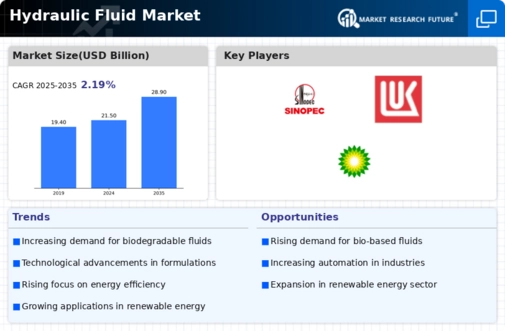
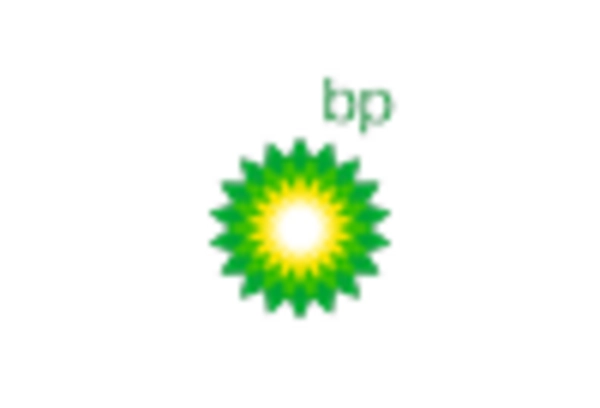
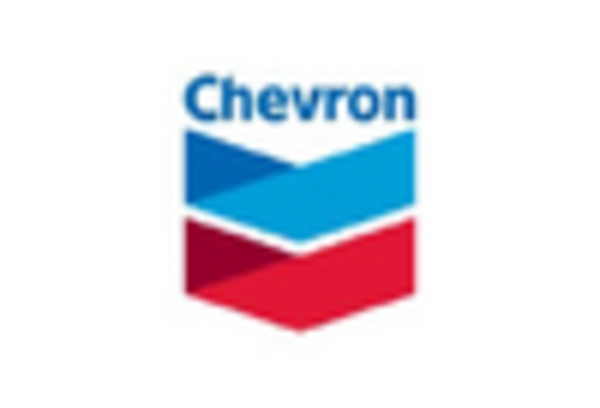

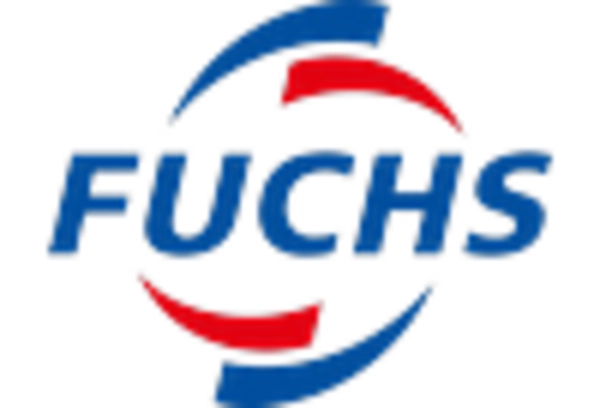
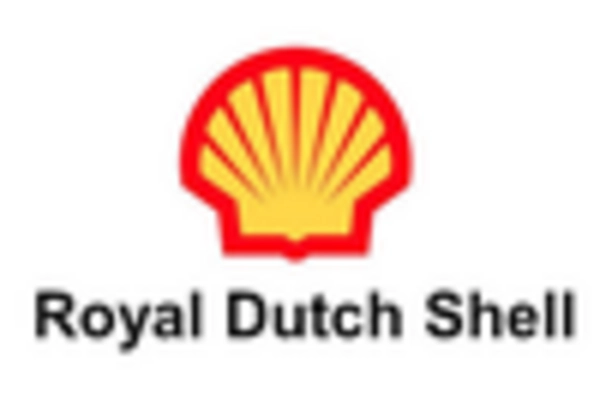


Leave a Comment